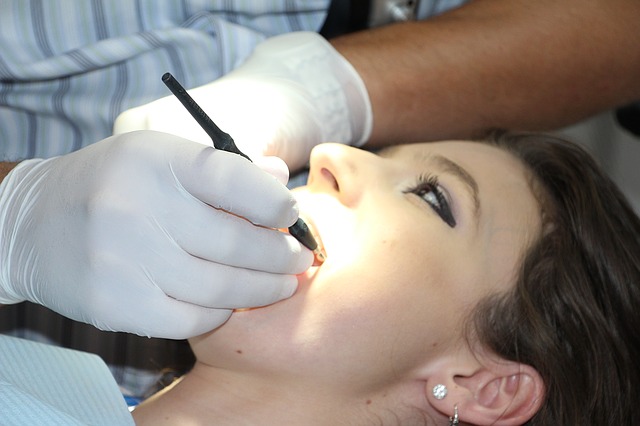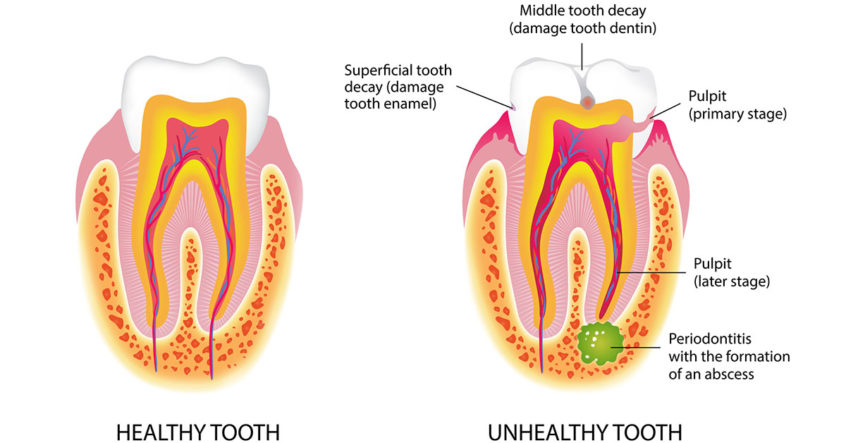Periodontics
Periodontics
Periodontics is the study of the teeth’s supporting structures, focusing on the gums. Periodontal disease, also called gum disease, is a common disorder involving inflammation of the gum line, and affects nearly 7 of every 10 Canadians. As plaque builds up, it can harden into tartar at/below the gum line, leading into infection. The Canadian Dental Association recommends flossing and brushing twice daily as the best way to keep gums clean and healthy. If left untreated, gum disease can cause tooth loss, discomfort, and painful infection. During each hygiene and check-up appointment, your dentist will evaluate the health of your gums, and develop a treatment plan to address any concerns involving the gums.


Gingivectomy
Healthy gums are an important part of a beautiful smile. As the gums in some people are extended onto the front surface of the teeth, the natural balance between the length of the teeth and the height of the gums is lost. The first step in a gum reduction or gingivectomy procedure is making sure that all the involved areas are completely numb. We then carefully make a small incision and remove the excess gum tissue. After a couple weeks, the area will be completely healed. The gum line will look much more natural after the procedure. A gum reduction procedure is a safe and effective way to remove excess gum tissue and improve the natural appearance of a person’s smile.
Gingival Grafting
In cases of excellent oral health, your gums are snug against the teeth and the root doesn’t show. Unfortunately in some cases, gums will pull away from the tooth, and some of the root surface becomes exposed. If left uncorrected, the loss of protective gum tissue may also mean even more severe problems down the road. Gingival grafting can correct this problem.
The first step in placing a graft is to thoroughly numb the involved areas. Then the graft is taken from a donor site on the palate. At the site of the graft, we gently separate the gums from the tooth. This creates a flap and gives us access to the area. We then carefully remove any plaque and tartar from the root surfaces. The graft is strategically placed and carefully stitched in place. After healing for a few weeks, the grafted tissue blends in beautifully. The results are gums have been restored and strengthened, the root surface is covered and protected, and the tooth now has a much more natural and pleasing appearance.


Periodontal Flap Surgery
Periodontal flap surgery is sometimes necessary when pockets of infection still remain after root canal therapy. After making sure all the areas are completely numb, we gently separate the gums from the tooth. This creates a flap and gives us access to the infected areas. We then remove any plaque and tartar from the root surfaces. The area is reshaped and the gum line is adjusted to make it easier for you to keep the teeth plaque free. Any soreness after surgery can usually be handled well by mild pain medication.
Tooth Crown Lengthening
When a tooth is broken-down due to decay or fracture, a crown is an excellent way to cover and protect it. In cases where the damage is more severe, there may not be enough remaining tooth structure to adequately support a crown. Years ago, a tooth like this would have to be extracted. But today, by using a procedure called crown lengthening, we can increase the amount of available tooth structure, and save the tooth.
The first step in this procedure is thoroughly numbing the entire area. Incisions are placed and the gums are gently pulled back. The area is then reshaped and sculpted to the desired shape. The gums are replaced and a couple of stitches are placed to speed healing. After a few weeks of healing, a crown is placed to cover and protect the damaged tooth. Crown lengthening is a minor surgical procedure that is an effective way to save a tooth that might otherwise be lost.

Bone Grafting
Bone defects in your jaw may be a result of periodontal disease, tooth removal, trauma, a cyst or long-term tooth loss. In these cases, we can perform a surgical procedure called bone grafting, in which we replace missing bone with other natural or simulated bone material. A bone graft not only replaces some of the bone that’s missing from your jaw, but it also stimulates your body to grow new bone tissue.
To place a bone graft, we first make sure the area is completely numb, and then we gently separate the gums from the bone or tooth. If a tooth is present in the grafting site, we’ll use a process called root planing to remove all of the plaque or tartar from the root surfaces of the tooth. This ensures that the area is free from harmful bacteria. We then sculpt the surrounding bone to the desired shape, and place the grafting material into the affected area. We may use bone from several sources for your graft: your own natural bone, bone tissue from another source, or artificial material. After the graft is placed, your gums are then repositioned over the graft site, and several sutures are placed. Over the course of three to nine months, your body works to repair the grafted site, growing new soft tissue and bone. This new bone growth strengthens the area by connecting your existing bone with the bone material we placed during the procedure.
Though your body can’t normally grow new bone on its own, new techniques and advanced bone grafting technology allow us to stimulate regrowth of lost jawbone tissue, strengthen your tooth attachment, or fill in the pockets of bone loss caused by periodontal disease.



